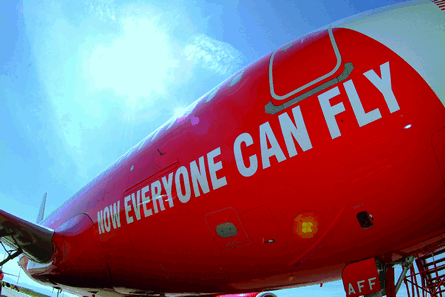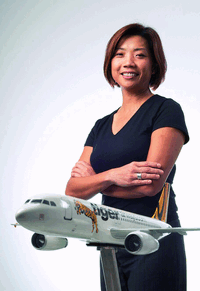A longstanding pledge by 10 Southeast Asian nations to liberalise air services is set to be tested in the coming weeks, as an implementation deadline that was set years ago finally approaches.
The Association of Southeast Asian Nations' air services liberalisation programme, dubbed the Roadmap for Integration of the Air Travel Sector, has been a concept under study for years. Industry observers say there are positive signs that it will become reality at the end of this year as previously agreed. Confirmation should come in November when transport ministers from the 10 countries are next due to meet.
Under the non-binding agreement adopted by ASEAN members in November 2004, a full liberalisation of air freight services within the region is due to take effect by the end of December.
 |
|---|
Low-cost carriers such as AirAsia will benefit from liberalisation |
Perhaps more importantly, however, a full liberalisation of third and fourth freedom rights for passenger services between capital cities is also due to go into effect by the end of this year. A full liberalisation of fifth freedom, or beyond, rights for passenger services between capital cities is then due to go into effect in December 2010.
All of the ASEAN countries have different views towards liberalisation - and many capital-to-capital markets are already fully liberalised - although in general all have been progressively opening up their air services markets in selective manners.
For example, Singapore and Malaysia both have highly liberal air services agreements with most of their international trading partners but between them they have long maintained one the most restrictive regimes in Asia. This meant that until early this year the lucrative Singapore-Kuala Lumpur route was dominated by national carriers Malaysia Airlines and Singapore Airlines under the terms of an air services agreement that had not been reviewed since 1980.
Indonesia has also adopted selectively protectionist air services policies. For example, it bars Singapore-based low-cost carriers from serving its four main cities including the capital Jakarta. Whether Indonesia agrees to allow low-cost players to serve Jakarta from the end of this year as it is supposed to do will be one of the more closely watched aspects of ASEAN's pledge to go ahead with the RIATS scheme.
Laos and Vietnam are some of the others that have been relatively slow to open their markets to allow more services by foreign airlines.
The group's 10 transport ministers are next due to meet officially in Manila in November and at that meeting they are meant to formally adopt the RIATS implementation timetable. According to a joint ministerial statement issued after their last meeting in Singapore in November 2007, the ministers "agreed to the signing of the ASEAN multilateral agreement on the full liberalisation of air freight services at the earliest possible opportunity, in time for implementation by December 2008".
Whether this target is met or not, the talk has already resulted in bilateral liberalisation initiatives in markets that were protected for so long. For example, Singapore and Malaysia recently decided between themselves that they will open up the long-protected Singapore-Kuala Lumpur route.
 |
|---|
"This is a huge milestone in Asian low-fare aviation"Rosalynn TayMD, Tiger Airways Singapore |
Early this year low-cost airlines were finally given rights to serve the route, but only in a limited manner. Malaysia's AirAsia currently operates two daily flights while from Singapore Jetstar Asia and Tiger Airways operate one flight each.
From December things will be radically different, as the Singapore-Kuala Lumpur route will be fully liberalised for services by airlines from each side. And already the low-cost airlines have announced huge frequency increases that will result in well over one million additional seats being available for travel a year.
Singapore and Malaysia have separately agreed to allow low-cost airlines to fly between Singapore and points in East Malaysia. They have also agreed to meet again early next year to discuss a further liberalisation that is expected to result in low-cost carriers being permitted to serve points in peninsular Malaysia other than Kuala Lumpur.
Rosalynn Tay, managing director of Tiger Airways Singapore, says "this is a huge milestone in Asian low-fare aviation". Jetstar Asia chief executive Chong Phit Lian adds: "It is definitely good news. The flight time between Singapore and KL is short and passengers in both cities are very familiar about the benefits of low-cost carriers."
At their last meeting in November 2007, ASEAN transport ministers also agreed in principle that they would work towards expanding RIATS in the hope that there will be a single ASEAN aviation market by 2015, similar to that of the European Union.
Sceptics doubt this will take place by 2015 as member countries have "flexibility with regard to the implementation of the proposed timeline". But even if a complete liberalisation does not take place by then, long-protected markets are already opening up and airfares are falling.
To read about industry calls for achieving a Single Asian Sky, see our Feedback piece at: flightglobal.com/unite
Source: Airline Business























